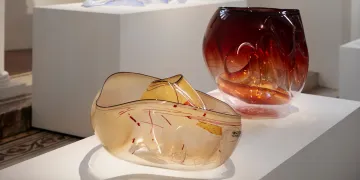Glassblowing is an ancient craft that has profoundly shaped the artistic and functional landscape of many societies. In London in particular, glasswork has a rich history that reflects a broader narrative of innovation, commerce and art. The city’s connection with glassblowing dates back centuries and is intertwined with the development of cultural institutions and economic hubs, including the historic area of Chelsea.
The Origins and Early Development
The history of glassmaking in England begins in the Roman times, but it was during the Middle Ages that glassmaking techniques truly began to evolve. London, with its burgeoning markets and ports, became a natural centre for the glass trade. Early records from the 14th and 15th centuries document the existence of glassworks in London, indicating the city's early adoption of this intricate art form.
By the 16th and 17th centuries, technological advancements and the influx of skilled craftsmen from Europe helped to foster a more sophisticated glass blowing industry. Notably, the establishment of glasshouses in Southwark and Lambeth provided the foundations for a thriving glass sector, benefiting from close proximity to the Thames for transportation and raw materials.
Chelsea: A Hub for Glass Innovation
In the 17th century, Chelsea emerged as a significant site for glass production, particularly under the influence of the Duke of Buckingham who established a glasshouse near the Chelsea Waterworks. This glasshouse was reputed for its production of drinking glasses, which were considered some of the finest in England at the time. The area's association with high-quality glassware set a precedent for excellence, attracting skilled artisans who contributed to the area's reputation as a centre of innovation.
The 19th century saw Chelsea and greater London adapting to the Industrial Revolution's impacts. Glass production in London expanded beyond luxury items to include scientific and industrial glassware, reflecting broader technological advancements. Chelsea artisans were at the forefront, pioneering techniques in stained glass and decorative art which adorned numerous public buildings and private residences, enhancing the aesthetic fabric of Victorian London.

Artistic Flourishes and the 20th Century
The turn of the 20th century brought new artistic movements that embraced and expanded the possibilities of glass. Art Nouveau and later Art Deco movements influenced London glassblowers, who incorporated contemporary styles into their work, evident in the intricate designs and the use of coloured glass that characterised the period.
During this era, several notable glassworks and studios in and around Chelsea continued to innovate, contributing significantly to both functional glassware and glass art. The legacy of these craftsmen is still evident in various historic buildings and museums across London, where stained glass windows and other decorative glassworks are preserved.
The Modern Era and Preservation of Heritage
Today, the tradition of glassblowing in London is upheld by numerous artisans and studios dedicated to both traditional and experimental techniques. The sense of heritage is a critical component of contemporary glassmaking, with craftsmen drawing on centuries of accumulated knowledge and techniques. Educational institutions and cooperative workshops in the London area, including those in Chelsea, offer courses and apprenticeships that strive to keep the ancient art alive for future generations.

The Chelsea Barracks Collection
In the present day, modern glassware still finds itself paying homage to the traditional designs and methods of production. The Westminster Glassware as part of the Chelsea Barracks Collection is heavily influenced by the Georgian designs of the eighteenth century and is. Designed by Albion Nord and produced by Stewart Hearn and London Glassworks, the Westminster Glassware comprises red & white wine glasses and tumblers all displaying a pronounced twisted design.
The appreciation of glass art and glassware continues to be fostered both by Chelsea Barracks as well as galleries and exhibitions throughout the city.

Opening on the 13th of May, the Chelsea Barracks estate will play host to a selection of work by eminent glass artist Dale Chihuly and his efforts in pushing the boundaries of what glass sculptures can truly be. For more information click here.


